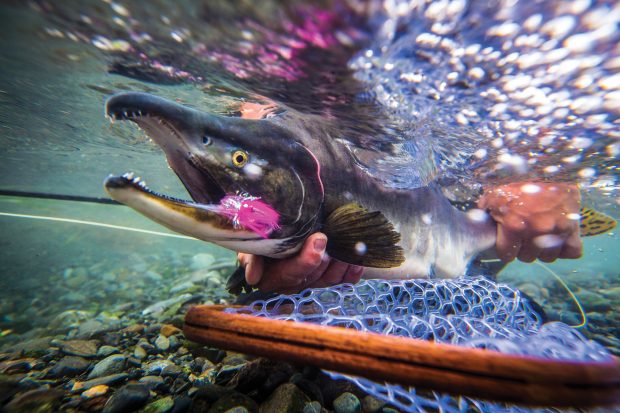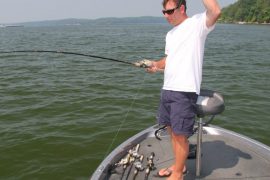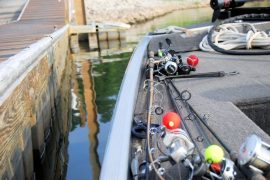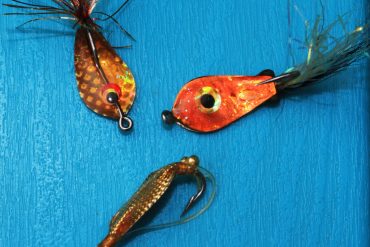
When, where, and how to target schools of pink salmon just a stone’s throw from the Emerald City.
[by David Paul Williams]t’s an odd-numbered year. That means millions of pink salmon—two-year old torpedoes—will swim into Washington and southern British Columbia waters where fly fishers eagerly await. Some are locals who hit the beach or river before or after work. Others come from afar, spending vacation days and airline miles to intercept the run. Both groups know these salmon are a terrific saltwater fly-rod fish.
Truth be told, I didn’t know much about the fish 20 years ago. All I remember reading was that the fish ate pink flies. Armed with scant information, a few flies whipped up the night before, and my 5-weight trout rod, I headed to a local river in search of adventure. A congregation of parked cars revealed a likely spot. They say newbies can learn plenty by observing others, especially if “the others” are catching fish. But that’s simply not part of my DNA. I waded thigh-deep and started flinging a pink squid fly towards the far bank, though I will admit, I sneaked a peek to see what the other anglers were using.
I heard a splash behind me and spun around to see a sneaky salmon skittering upstream, spraying water as it powered through a riffle. It’s metallic blue-black back glistening in the afternoon sun. Despite what my sister claims, mama didn’t raise a complete dummy. I immediately realized the wisdom of fishing where the fish were swimming. A silver-bright pink salmon hit on my first cast and we both were hooked; she on that pink squid, me on fly fishing for pinkies.

A few days later I launched myself inside a float tube into Puget Sound from a county park that includes the word “point” in its name. It’s a bit unsettling to be in a tube on the Sound when the wind and current are running quickly along in one direction and large marine mammals are searching for food between you and the shore. But I’m willing to be a bit unsettled…





